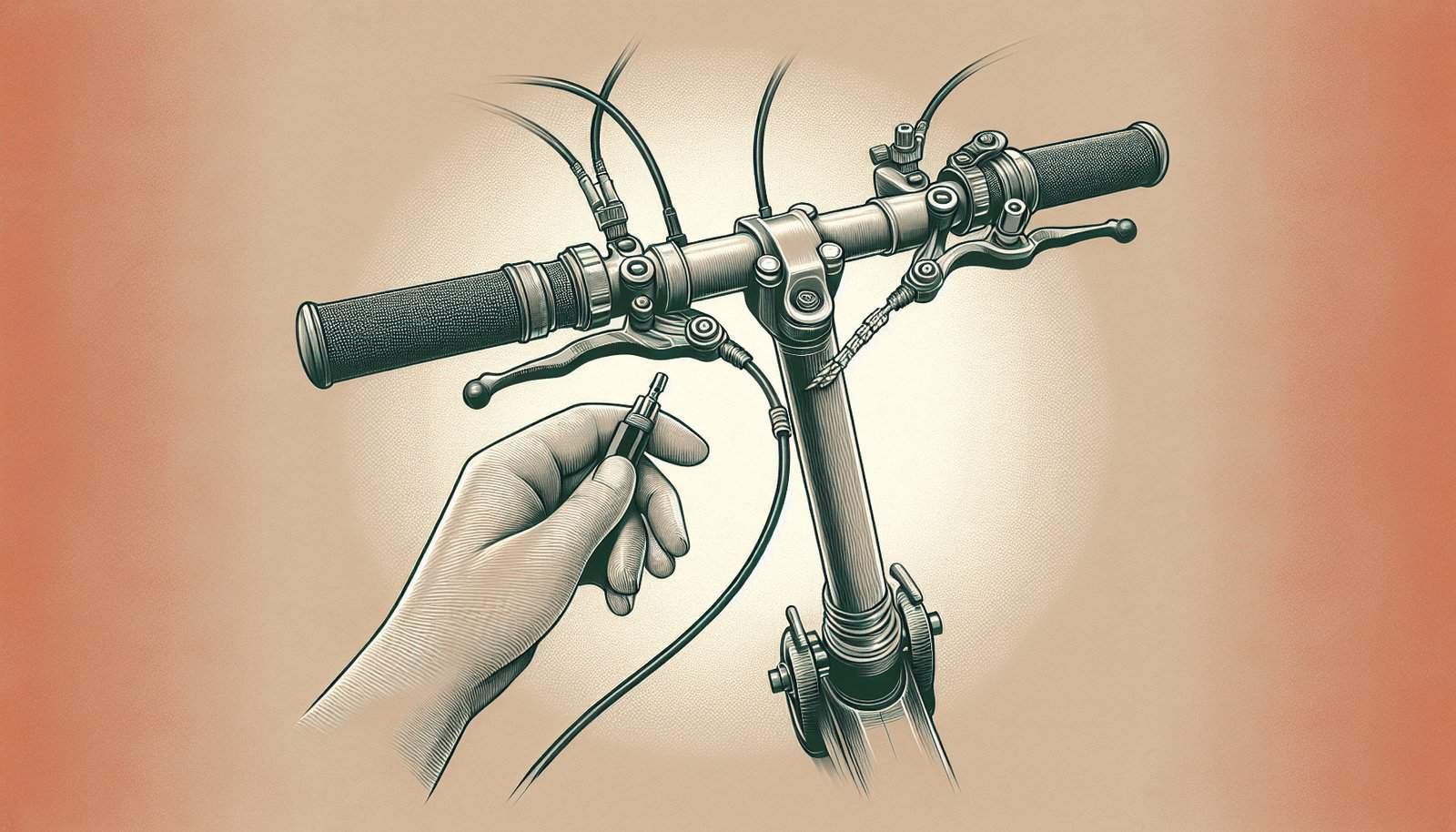Ever found yourself wondering, “How do I adjust the sensitivity of the brakes on my electric scooter?” If that’s a question on your mind, then you’re in the right place! Adjusting the brake sensitivity on your electric scooter is crucial for ensuring both safety and a smooth riding experience. If the brakes are too sensitive, you might feel jolted every time you need to stop. On the other hand, if they’re not responsive enough, stopping might become an anxiety-inducing feat. This guide will walk you through the steps and considerations you need to make your brakes just right.
Understanding Brake Sensitivity
Before you adjust the brakes, it’s important to understand what brake sensitivity is. Simply put, brake sensitivity refers to how responsive your scooter’s brakes are when you engage them. High sensitivity means that a slight touch will activate the brakes strongly, while low sensitivity means you have to press harder to achieve the same effect.
Why Brake Sensitivity Matters
The sensitivity of your brakes affects your overall riding experience. High sensitivity might make the scooter stop abruptly, potentially causing you to lose balance. Conversely, brakes that are not sensitive enough can be dangerous because you might not be able to stop quickly in an emergency.
Types of Brakes in Electric Scooters
Electric scooters typically come with different types of brakes, and each has its own method of adjusting sensitivity. Here are the most common types:
| Brake Type | Description | Sensitivity Adjustment Method |
|---|---|---|
| Drum Brakes | Enclosed in the wheel hub, low maintenance | Cable tension adjustment |
| Disc Brakes | Mechanical or hydraulic, visible brake disc | Cable tension, hydraulic fluid adjustments |
| Electric Brakes | Use the motor to brake | Usually software or firmware based |
| Foot Brakes | Activated by pushing the rear fender | Physical adjustment often not possible |
Tools Needed for the Job
You don’t need a full toolbox to adjust your scooter brakes, but having the right tools can make a difference. Here’s a list of what you’ll likely need:
- Allen wrenches
- Screwdrivers
- Pliers
- Brake fluid (for hydraulic brakes)
- Cable tightener (for cable-based brakes)

Step-by-Step Guide to Adjusting Brake Sensitivity
Adjusting brake sensitivity differs depending on the type of brakes your scooter has. Below, you’ll find detailed instructions for the most common types: drum brakes, disc brakes, and electric brakes.
Adjusting Drum Brakes
Drum brakes are known for being low maintenance, but they do require occasional adjustment.
- Locate the Brake Cable: Typically found near the wheel hub.
- Loosen the Lock Nut: Use a wrench or pliers to loosen the lock nut.
- Adjust Cable Tension: Pull the brake cable tighter to increase sensitivity or loosen it to decrease sensitivity.
- Tighten the Lock Nut: Once you find the sweet spot, tighten the lock nut back up to secure the cable.
Adjusting Disc Brakes
Disc brakes are either mechanical (cable-operated) or hydraulic. The method for adjusting sensitivity will vary slightly between these two.
Mechanical Disc Brakes
- Locate the Brake Caliper: This is usually mounted near the brake disc.
- Adjust the Tension Screw: There’s usually a tension screw on the caliper that you can turn clockwise to increase sensitivity or counterclockwise to decrease it.
- Check the Cable: Ensure the brake cable is neither too tight nor too loose. You may need to use an Allen wrench to make adjustments to the cable tension.
- Test the Brakes: Ride your scooter a short distance to check the effectiveness of the adjustments.
Hydraulic Disc Brakes
- Check Brake Fluid Levels: Low fluid can affect brake performance.
- Bleed the Brakes: If the fluid is low or if there is air in the line, you’ll need to bleed the brakes. Follow the manufacturer’s instructions for bleeding.
- Adjust the Reach: Some hydraulic brake levers allow you to adjust the reach of the lever, which can effectively change the sensitivity.
- Test the Brakes: As always, a short test ride will let you know if further adjustments are needed.
Adjusting Electric Brakes
Electric brakes are often adjusted electronically, either through a display panel or an app.
- Access the Control Panel: This could be an onboard display or via a mobile application.
- Navigate to Brake Settings: Look for an option related to brake settings or motor resistance.
- Adjust Sensitivity: Follow the prompts to adjust the sensitivity. This could involve sliding a bar or selecting preset modes.
- Test the Brakes: Always test your changes in a safe environment.
Common Problems and Solutions
Even after adjustments, you might encounter some issues. Here are common brake-related problems and their solutions:
| Problem | Solution |
|---|---|
| Brakes Too Sensitive | Loosen the cable tension or reduce hydraulic pressure. |
| Brakes Unresponsive | Tighten the cable, check for air in hydraulic lines, or check electric settings. |
| Squeaky Brakes | Clean the brake components and check for wear. |
| Uneven Braking | Adjust individual calipers or check for worn parts. |

Maintenance Tips
Regular maintenance can prevent many brake-related issues. Here are some tips to keep in mind:
- Regular Cleaning: Dirt and debris can affect brake performance.
- Check for Wear and Tear: Worn-out brake pads or discs should be replaced promptly.
- Inspect Brake Cables: Ensure cables are not frayed or stretched.
- Hydraulic Fluid: Keep an eye on fluid levels and replace if needed.
Safety Precautions
Adjusting your brakes improves safety, but here are some additional precautions to take:
- Wear Safety Gear: Always wear a helmet and pads when testing adjusted brakes.
- Avoid High-Traffic Areas: Test your scooter in a controlled, low-traffic environment.
- Check After Adjustments: Always double-check your work to ensure nothing is loose or improperly adjusted.

When to Seek Professional Help
While adjusting the sensitivity of your scooter’s brakes can often be done at home, there are situations where professional help is advisable:
- Complex Adjustments: If your scooter has a complex brake system, such as advanced hydraulic brakes, it might be best to consult a professional.
- Persistent Problems: If adjustments don’t seem to resolve the issue, a professional can diagnose underlying problems.
- Manufacturer Warranty: Making adjustments yourself could void the warranty. Check the guidelines before proceeding.
FAQs
How often should I adjust my scooter’s brakes?
It depends on usage, but a general rule is to check them every three months or when you notice a drop in performance.
Can I use regular bike tools to adjust my scooter brakes?
Yes, most of the tools used for bike repairs are compatible with electric scooter brake adjustments.
What should I do if I hear a grinding noise when braking?
This could indicate worn-out brake pads or discs. Replace them immediately.
Is it okay to use lubricant on brake parts?
Never use lubricants on the brake pads or discs as this can severely impact braking performance.
How do I know if my scooter brakes need bleeding?
If you notice a spongy feel or reduced braking power, this could be an indication that your hydraulic brakes need bleeding.

Conclusion
Adjusting the sensitivity of the brakes on your electric scooter doesn’t have to be a daunting task. By understanding the type of brakes you have and following these step-by-step guidelines, you can achieve a safer and more comfortable ride. Remember, regular maintenance is key to ensuring that your brakes remain in top shape. So, take some time to give your scooter the attention it deserves—it’s worth it for the peace of mind you’ll gain from knowing you can stop safely when you need to.

